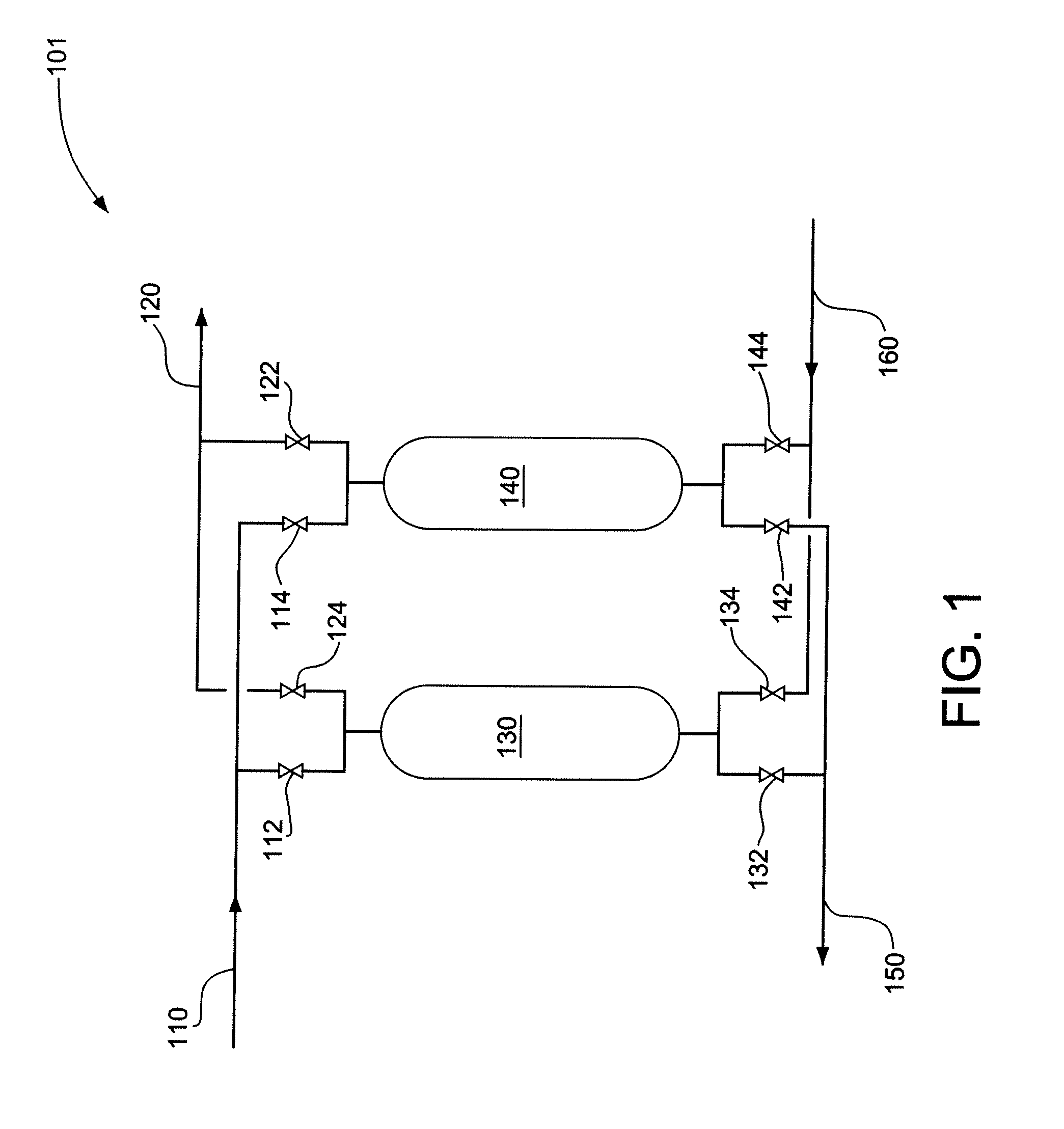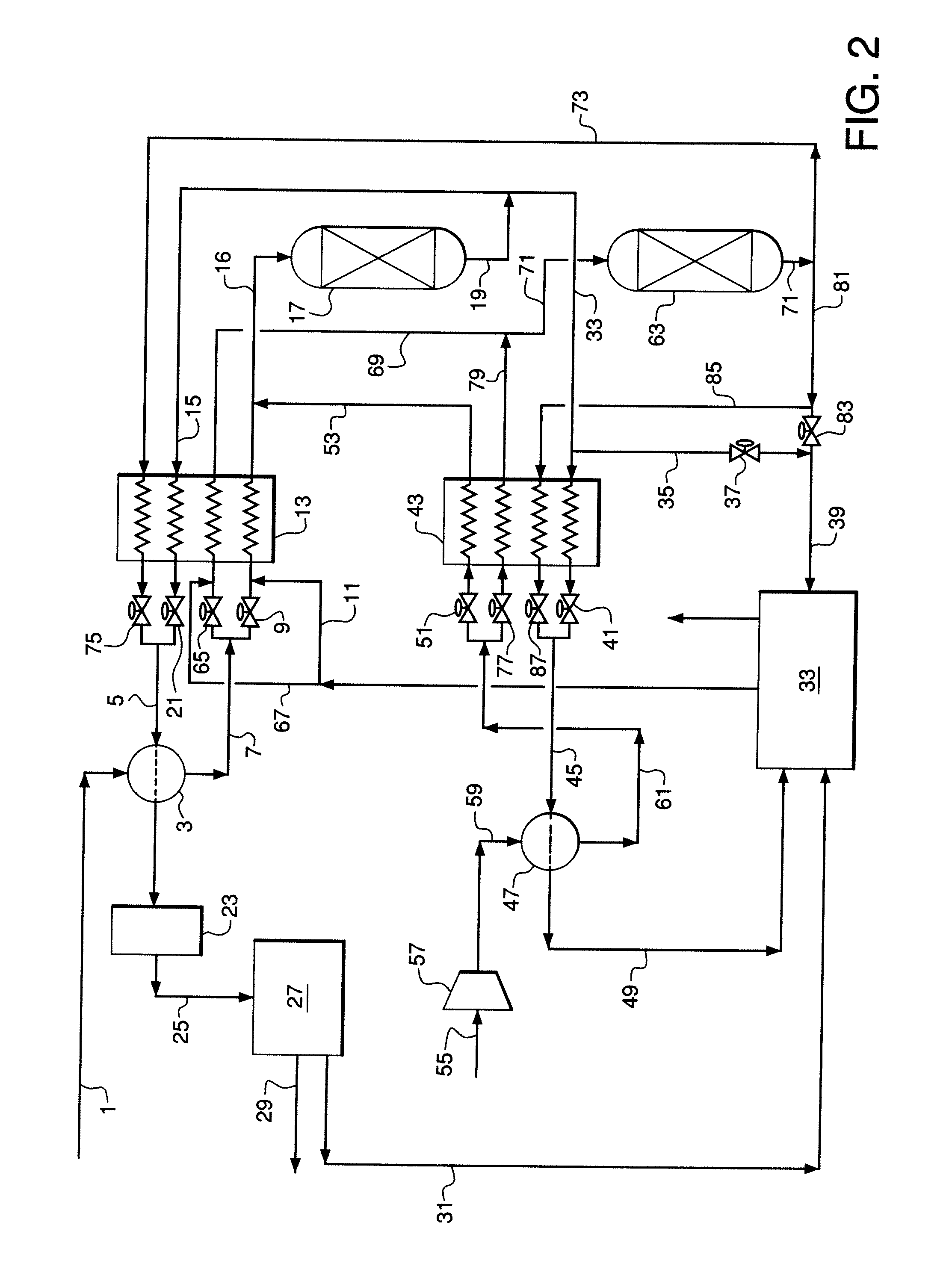CO2-Sorptive Pellets and Uses Thereof
a technology of co2sorptive pellets and pellets, which is applied in the direction of physical/chemical process catalysts, separation processes, and other chemical processes, can solve the problems of difficult volumetric expansion and contraction without, fine powders are generally not suitable for use in fixed bed or moving bed reactors, and powders are generally not suitable for fluidized bed reactors. achieve the effect of structural and dimensional stability, and sustained performan
- Summary
- Abstract
- Description
- Claims
- Application Information
AI Technical Summary
Benefits of technology
Problems solved by technology
Method used
Image
Examples
example 1
[0200]In example 1, CaO-calcium aluminate pellets were prepared according to conventional techniques. A mixture was prepared by mixing 69.7 g of calcium oxide (prepared by decomposing calcium carbonate at 900° C.), 40 g of alumina in the form of boehmite (75% pure alumina), and 2 g methocel as a pore former. The amount of CaO and alumina in the mixture was sufficient to (a) stoichiometrically produce a nominal composition of 3CaO.2Al2O3 and (b) provide sufficient amount of CaO to produce CaO-calcium aluminate containing 45 wt % of free CaO. The particle size of CaO and alumina powders was about 10 microns. Approximately 82 g of deionized water was added to the mixture to prepare a paste. The paste was then used to prepare 1 / 16 inch diameter green pellets by extruding in a lab-scale extruder. The green pellets were dried at 120° C. They were heated at 2° C. / minute from room temperature to 600° C. in a furnace in air. The calcination temperature was maintained at 600° C. for 30 minute...
example 2
[0205]In example 2, CaO-calcium aluminate pellets were prepared according to conventional techniques. A mixture was prepared by mixing 67.5 g of calcium oxide (prepared by decomposing calcium carbonate at 900° C.), 25 g of alumina in the form of boehmite (75% pure alumina), and 2 g methocel as a pore former. The amount of CaO and alumina in the mixture was sufficient to (a) stoichiometrically produce a nominal composition of 3CaO.2Al2O3 and (b) provide sufficient amount of CaO to produce CaO-calcium aluminate containing 60 wt % of free CaO. The particle size of CaO and alumina powders was about 10 microns. Approximately 81 g of deionized water was added to the mixture to prepare a paste. The paste was then used to prepare 1 / 16 inch diameter green pellets by extruding in a lab-scale extruder. The green pellets were dried at 120° C. They were heated at 2° C. / minute from room temperature to 600° C. in a furnace in air. The calcination temperature was maintained at 600° C. for 30 minute...
example 3
[0209]In example 3, CaO-calcium aluminate pellets were prepared in accordance with the present invention. A mixture was prepared by mixing 77.5 g of calcium carbonate, 23.8 g of CaO (prepared by decomposing calcium carbonate at 900° C.), and 40 g of alumina in the form of boehmite (75% pure alumina). The amount of CaO and alumina in the mixture was sufficient to stoichiometrically produce a nominal composition of 3CaO.2Al2O3. In addition, the amount of calcium carbonate, CaO, and alumina in the mixture was sufficient to produce CaO-calcium aluminate containing 44 wt % of free CaO. The particle size of calcium carbonate, CaO and alumina powders was about 10 microns. Approximately 58 g of deionized water was added to the mixture to prepare a paste. The paste was then used to prepare 1 / 16 inch diameter green pellets by extruding in a lab-scale extruder. The green pellets were dried at 120° C. The pellets were heated at 2° C. / minute from room temperature to 600° C. in a furnace in air. ...
PUM
| Property | Measurement | Unit |
|---|---|---|
| porosity | aaaaa | aaaaa |
| median pore diameter | aaaaa | aaaaa |
| length | aaaaa | aaaaa |
Abstract
Description
Claims
Application Information
 Login to View More
Login to View More - R&D
- Intellectual Property
- Life Sciences
- Materials
- Tech Scout
- Unparalleled Data Quality
- Higher Quality Content
- 60% Fewer Hallucinations
Browse by: Latest US Patents, China's latest patents, Technical Efficacy Thesaurus, Application Domain, Technology Topic, Popular Technical Reports.
© 2025 PatSnap. All rights reserved.Legal|Privacy policy|Modern Slavery Act Transparency Statement|Sitemap|About US| Contact US: help@patsnap.com



